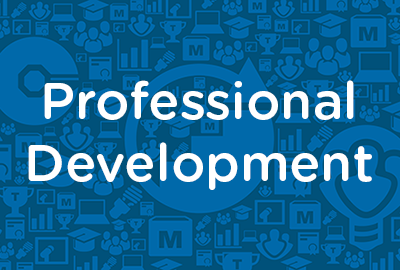 |
Cross-Cultural Business Communication: Overcoming Communication Barriers |
1.00 |
There are several barriers that can affect cross-cultural communication. Generally, barriers have a negative effect on communication because they might distort the speaker’s message or the listener’s understanding. It is important to understand these barriers to communicate effectively with people from different cultures.
In this course you will learn to: identify common cross-cultural communication barriers, overcome communication barriers and avoid cultural bias, and employ qualified interpreters and communicate through them. |
 |
Anti-Discrimination Law: A Primer for Small Businesses |
0.75 |
There are multiple federal laws regarding discrimination in the workplace.
Beginning with the Civil Rights Act of 1964, the U.S. Congress has passed a number of laws to address various forms of discrimination. The Fair Housing Act of 1968, for example, prohibited discrimination concerning the sale, rental, and financing of housing based on race, religion, national origin, sex, (and as amended) handicap (later called disability), and family status. In 1990, the Americans With Disabilities Act (ADA) was passed to protect the rights of individuals who are differently enabled, physically or mentally. Other laws, or amendments made to existing laws, provided further protections for people with disabilities, workers over the age of 40, and LGBTQ+ individuals, among others.
The purpose of this course, however, is not to give a history lesson on U.S. anti-discrimination law but to focus on how those laws apply today to small businesses, their employees, and their customers. |
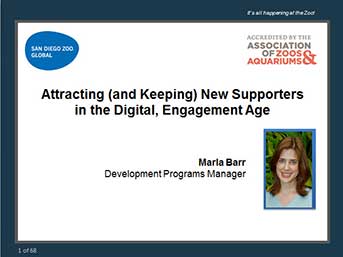 |
Attracting (and Keeping) New Supporters in the Digital, Engagement Age |
1.00 |
There are more non-profits in the market every day, but less donors. Is this a recipe for disaster, or an opportunity for us to transform what donor acquisition, retention and stewardship look like in our digital age? Join us during this 60 minute webinar to learn what innovative donor engagement in 2013 looks like by walking through some of the San Diego Zoo Global's recent digital campaign hits and misses to see how you can help your organization rise above this changing donor landscape. |
 |
Careers Without College |
1.00 |
There are many different ways to be successful in life. What might be the right career path for some may not be the right choice for you. Finding your niche is important. When selecting the right career path, it’s important to weigh all of your options. In this course, we will explore a wide range of careers available to anyone with various skills and a high school education.
|
 |
Video Analysis: Activities and Events |
1.00 |
The video-data for your inquiry project has been collected, now what? Testing your hypothesis is usually a dance, back and forth between the "ideal" and "reality-check". Listen to a research team decide how they will analyze video-data to extract just the information needed to focus on the inquiry questions. The first step is to sort video clips by activity categories, then score each clip using a recording protocol defined in terms of counting behavioral events and/or time sampling of activity states. |
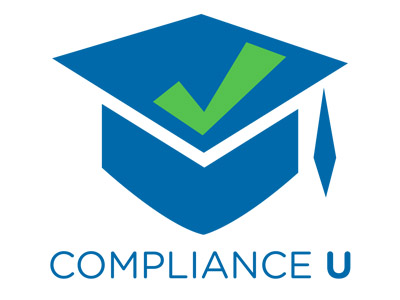 |
Equal Opportunity 101 (Corrections) |
0.17 |
The U.S. Department of Labor Civil Rights Center is committed to providing clear and easy-to-access information on how to comply with federal equal opportunity and nondiscrimination laws and regulations that (1) prohibit discrimination in DOL-funded programs and activities, and (2) prohibit discrimination on the basis of disability by certain public entities and in DOL-conducted activities. This course is a brief overview on equal opportunity rights. |
 |
Saving the Tuatara: Habitat Restoration on Stephens Island, New Zealand |
1.00 |
The Tuatara, a prehistoric reptile from New Zealand, often considered to be a "Living Fossil," is making a comeback. Long extinct from the mainland and now only found on a few islands, the Tuatara is getting help. In this presentation we go to Stephens Island, New Zealand to take part in a 10 day re-vegetation project aimed at providing Tuataras with an ideal habitat for the future. Stephens Island is home to over half of the world's Tuatara population. It is an amazing island, fitting for an amazing creature. |
 |
Bedrock: Therapeutic Communications for EMS |
1.00 |
The topic of therapeutic communications relates to nearly every EMS response and is especially important for high-acuity situations. Elizabeth C. Shannon, EMT, MS, RN, PMHNP-BC, brings her years of experience as a mental health care provider and an EMT to the table in this insightful discussion. As you hear her navigate the questions posed, we hope that you will confirm what you are already doing well. We also hope that your reflection on the subject will lead to improved EMS responses for you and the other medics on your crew.
Final Exam: Please read each question carefully. You will have two attempts to gain a 75% or higher on this exam. If you are not successful in two attempts, you are welcome to take the course again to gain the certification. |
 |
Business Accounting: Accounting for Inventory |
1.00 |
The term inventory refers to the assets that a company holds for resale in the normal course of business. It is important to distinguish between the types of inventory costs incurred and how the inventory costs are calculated. |
 |
Integrating Plants and Animals at San Diego Zoo Safari Park |
1.00 |
The task of how to maintain a healthy plant collection in and around animal exhibits in zoos, for the benefit of the animals and guests, is a challenge. This webinar will show the techniques used for selection, installation and maintenance of trees and other plants, for bird, small and large mammal, primate and multi species exhibits. It will give real examples of plants that work, and those that don’t, and techniques you can implement to ensure the best possible integration for both the plants and animals. Although focused on the Southern California climate zones, many of the principles are applicable at zoos nationwide. |
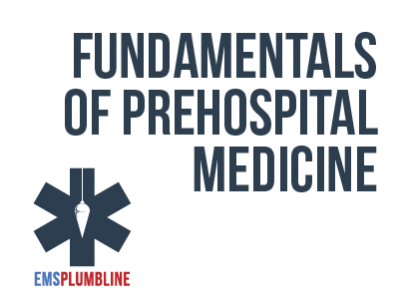 |
Building Upward: Resuscitation of Anaphylactic Shock Part 2—Scenario 1 |
1.00 |
The second part of this series is the first of three scenarios. All three scenarios are designed to review complicated situations that BLS providers may be asked to navigate. This scenario has us consider the care of an anaphylactic patient in the setting of a pregnancy. Paramedic student Vanessa Petote does an excellent job of interviewing Dr. Jeremy Cushman. Final Exam: Please read each question carefully. You will have two attempts to gain a 70% or higher on this exam. If you are not successful in two attempts, you are welcome to take the course again to gain the certification. |
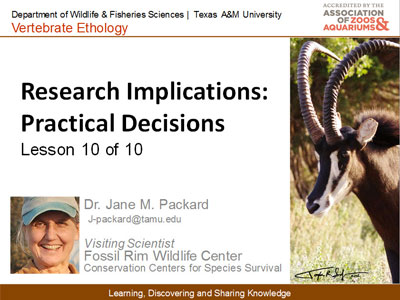 |
Research Implications for Practical Decisions |
1.00 |
The researchers on your team have presented you with the results of their behavioral inquiry. Now you are ready to decide what this means in terms of adaptive management to meet your goals for the animals under your care. Listen as practitioners and researchers return to the "3 C's" to discuss the practical implications of a behavioral study |
 |
Organizational Communication: Relational Context and Organizations (Instructor Guide) |
0.75 |
The relational context of a communication exchange includes the circumstances, within an organization, that necessitate this exchange between employees. A number of factors affect the relational context, including the status of the employees within the organization, their motivation, and their relationship with other employees. All communication within an organization depends on the intent of the participants.
In this course you will learn to: identify the relational context and the factors that influence it, and identify the different personality types, and develop individual-organizational relationships.
This Instructor's Edition of this course includes notes and suggestions to assist you in presenting the material, whether in an in-person classroom setting, or as an instructor-led online or distance-learning course. It also provides you with the answers to questions found in mid-lesson activities, as well as in the quiz that concludes the course. |
 |
Organizational Communication: Relational Context and Organizations |
0.75 |
The relational context of a communication exchange includes the circumstances, within an organization, that necessitate this exchange between employees. A number of factors affect the relational context, including the status of the employees within the organization, their motivation, and their relationship with other employees. All communication within an organization depends on the intent of the participants.
In this course you will learn to: identify the relational context and the factors that influence it, and identify the different personality types, and develop individual-organizational relationships. |
 |
Infection Control in Program Animals |
1.00 |
The purpose of this webinar is to offer a sensible approach for providing safe guest interactions with program animals at AZA zoos. The presentation will help you understand how to prevent zoonotic diseases and how to respond when they occur. You will learn the single most effective method of infection control. Participants will understand what is more important than making sure all animals are free of infectious diseases. It will help you to decide what species you can use for animal contact situations, what diseases to screen for, and how to respond to laboratory test results.
|
 |
Combating Sexual Harassment in the Workplace (NY) (Short) |
0.50 |
The purpose of this interactive training is to set forth a common understanding about what is and what is not acceptable in our workplace so that all employees can recognize sexual harassment and discrimination and understand their rights to a safe workplace. |
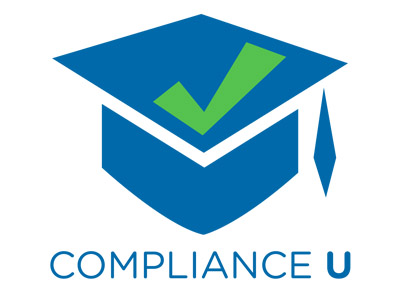 |
Train-the-Trainer: Training Methods (Corrections) |
0.25 |
The purpose of this course is to provide the education and tools needed so that participants will be able to effectively deliver safety and health training to their workers. By the end of this course participants will be able to explain the different titles of a teacher, determine positive classroom control measures, examine diversity and stereotypes, describe training delivery methods, analyze questioning types and techniques, demonstrate the use of training aids, define how to empower the adult learner, and illustrate the proper use of assessments and critiques. |
 |
Train-the-Trainer: Training Methods |
0.25 |
The purpose of this course is to provide the education and tools needed so that participants will be able to effectively deliver safety and health training to their workers. By the end of this course participants will be able to explain the different titles of a teacher, determine positive classroom control measures, examine diversity and stereotypes, describe training delivery methods, analyze questioning types and techniques, demonstrate the use of training aids, define how to empower the adult learner, and illustrate the proper use of assessments and critiques. |
 |
Media and Social Media Best Practices |
0.25 |
The purpose of this course is to ensure you are aware of organizational best practices in regard to contact with Media, and use of Social Media. This policy is intended to support ALL employees and volunteers in making the best decisions for the organization. |
 |
Supporting Family Caregivers of Older Adults |
0.50 |
The purpose of this course is to describe the importance of supporting family caregivers of older adults. Specifically, content will describe ways to identify the needs of different family caregiver systems by conducting a caregiver assessment. The core elements of a family caregiver assessment will be reviewed. |
 |
The Indian Child Welfare Act |
1.00 |
The purpose of the Indian Child Welfare Act (ICWA) is to protect the rights of Native American communities and prevent Native American children from being unjustifiably removed from their families. This course will give you a general knowledge of how ICWA contributes to the preservation of Native American culture. |
 |
Creativity and Innovation: Promoting Team Creativity |
1.34 |
The purpose of a team is to bring together people with diverse personalities, knowledge, education, and experience. This combined diversity encourages creativity and productivity to accomplish a common goal. Teams might consist of people from a single department or several departments.
Teams can generate new ideas, expand on or improve current ideas, make decisions, and solve problems. Teams can also be assigned to a specific task or be made responsible for a broader area, such as responding to changing customer expectations. When team members recognize their roles in a team, and the manager performs his responsibilities, creativity has a better chance of flourishing.
In this course you will learn to: identify characteristics of creative teams, and manage these teams effectively, conduct creative team sessions, and conduct brainstorming sessions, and use creativity to solve problems. |
 |
Creativity and Innovation: Promoting Team Creativity (Instructor Guide) |
1.34 |
The purpose of a team is to bring together people with diverse personalities, knowledge, education, and experience. This combined diversity encourages creativity and productivity to accomplish a common goal. Teams might consist of people from a single department or several departments.
Teams can generate new ideas, expand on or improve current ideas, make decisions, and solve problems. Teams can also be assigned to a specific task or be made responsible for a broader area, such as responding to changing customer expectations. When team members recognize their roles in a team, and the manager performs his responsibilities, creativity has a better chance of flourishing.
In this course you will learn to: identify characteristics of creative teams, and manage these teams effectively, conduct creative team sessions, and conduct brainstorming sessions, and use creativity to solve problems.
This Instructor's Edition of this course includes notes and suggestions to assist you in presenting the material, whether in an in-person classroom setting, or as an instructor-led online or distance-learning course. It also provides you with the answers to questions found in mid-lesson activities, as well as in the quiz that concludes the course. |
 |
Animal Welfare - General Audience - Short Course |
0.33 |
The public’s interest in animal welfare is increasing. This short course is designed for all non-animal care staff and features the same but condensed content as presented in the original Animal Welfare Professional version. This short version aims to educate non-animal care staff about animal welfare, how it is measured on a continuum from good to poor and about our efforts to ensure our animals are thriving. Staff who interact with our guests, are ideally positioned to share this important information with our guests. This fast-paced, 20-minute course is designed to equip our employees with key information on the subject of animal welfare. |
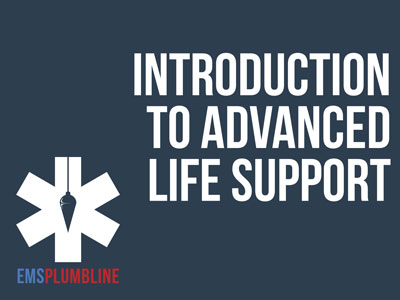 |
2019 Collaborative Advanced Life Support Adult and Pediatric Treatment Protocols |
3.00 |
The protocol changes that are listed in this lesson were developed by a committee of your ALS peers and Medical Directors from around NYS. A great deal of thought went into this project, and we would like to give you a little insight into how we came to this point. Dr. Jeremy Cushman has been involved in drafting EMS protocols for nearly two decades. His experience with the NYS Collaborative Protocol Projects will certainly lead to discussion within your coworkers.
Final Exam: These ten questions are NOT meant to summarize the entire set of protocols. Please take your time and answer carefully. These questions will spark further discussion and lead to improved care within your region. An 80% or higher is required to obtain a passing score. You have two attempts to gain this score. |


























